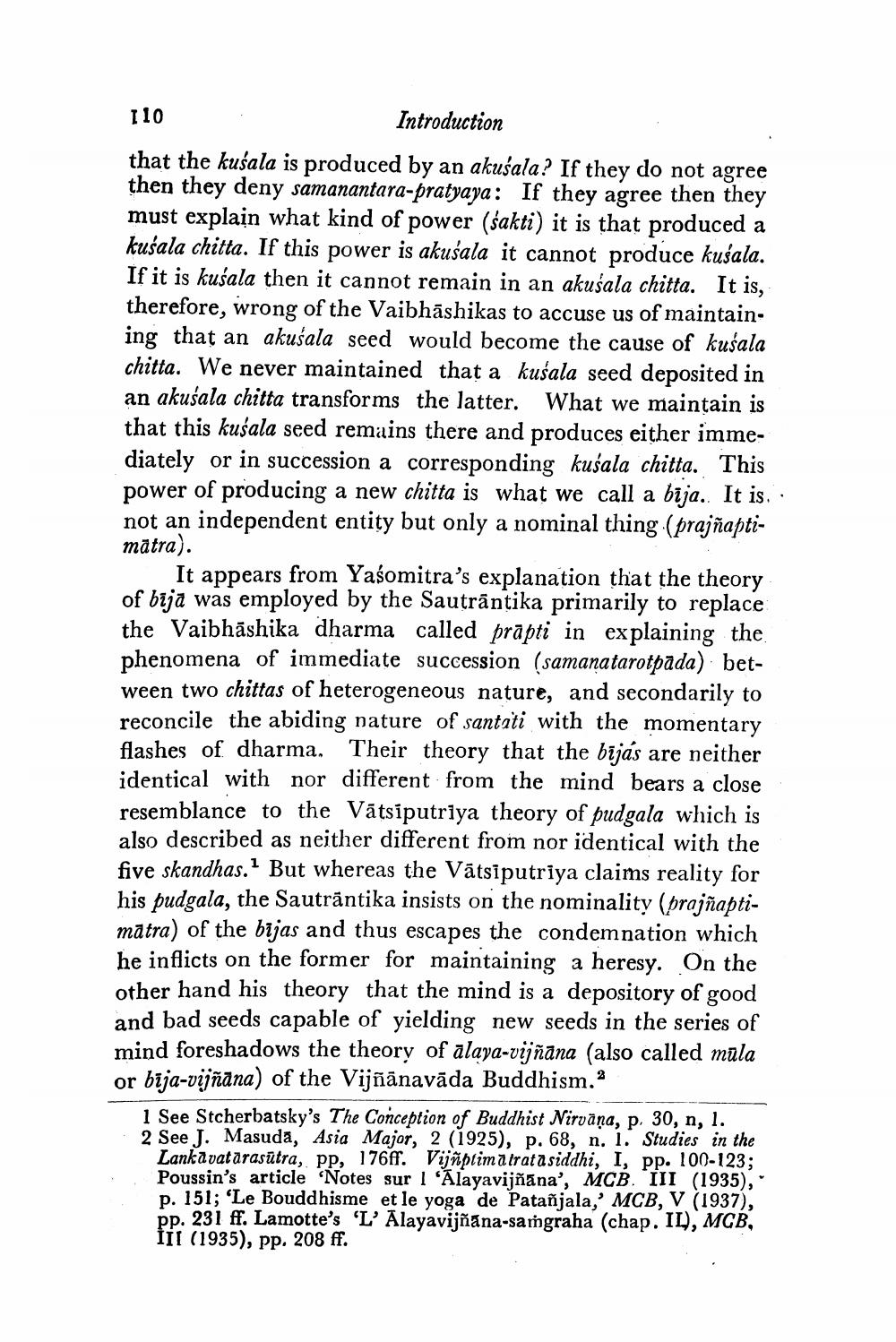________________ 110 Introduction that the kusala is produced by an akusala? If they do not agree then they deny samanantara-pratyaya: If they agree then they must explain what kind of power (sakti) it is that produced a kusala chitta. If this power is akusala it cannot produce kusala. If it is kusala then it cannot remain in an akusala chitta. It is, therefore, wrong of the Vaibhashikas to accuse us of maintain. ing that an akusala seed would become the cause of kusala chitta. We never maintained that a kucala seed deposited in an akusala chitta transforms the latter. What we maintain is that this kusala seed remains there and produces either immediately or in succession a corresponding kusala chitta. This power of producing a new chitta is what we call a bija. It is. * not an independent entity but only a nominal thing (prajnaptimatra). It appears from Yasomitra's explanation that the theory of bija was employed by the Sautrantika primarily to replace the Vaibhashika dharma called prapti in explaining the phenomena of immediate succession (samanatarotpada) between two chittas of heterogeneous nature, and secondarily to reconcile the abiding nature of santati with the momentary flashes of dharma. Their theory that the bijas are neither identical with nor different from the mind bears a close resemblance to the Vatsiputriya theory of pudgala which is also described as neither different from nor identical with the five skandhas.? But whereas the Vatsiputriya claims reality for his pudgala, the Sautrantika insists on the nominality (prajnaptimatra) of the bijas and thus escapes the condemnation which he inflicts on the former for maintaining a heresy. On the other hand his theory that the mind is a depository of good and bad seeds capable of yielding new seeds in the series of mind foreshadows the theory of alaya-vijnana (also called mula or bija-vijnana) of the Vijnanavada Buddhism. 2 1 See Stcherbatsky's The Conception of Buddhist Nirvana, p. 30, n, l. 2 See J. Masuda, Asia Major, 2 (1925), p. 68, n. 1. Studies in the Lankavat arasutra, pp, 176ff. Vijnptima trata siddhi, I, pp. 100-123; Poussin's article Notes sur l 'Alayavijnana', MCB III (1935), " p. 151; 'Le Bouddhisme et le yoga de Patanjala,' MCB, V (1937), pp. 231 ff. Lamotte's 'L' Alayavijnana-samgraha (chap. ID), MGB, 11 (1935), pp. 208 ff.




